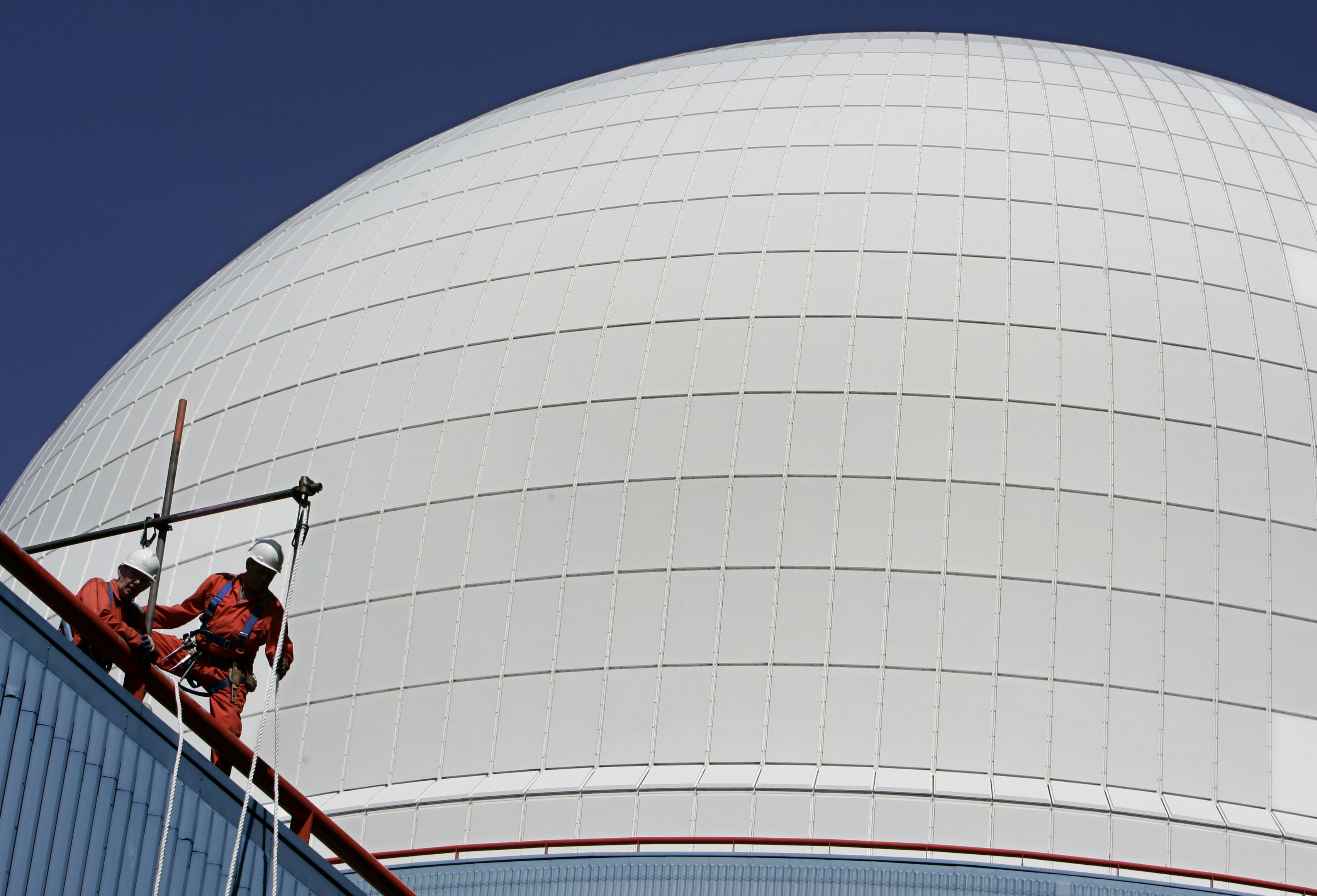 FILE - Backdropped by the dome of the nuclear reactor of Sizewell nuclear plant, commissioned in 1995, workers perform their duties, in eastern England, in this Monday June 5, 2006 file photo. EU Energy Commissioner Guenther Oettinger says the cost of necessary improvements at the 145 nuclear reactors in the 27-nation European Union could be as high as euro 25 billion ($32 billion) over the coming years. A European Union report released Thursday Oct 4 2012 says stress tests carried out in the wake of the March 2011 Fukushima accident in Japan show that almost all the plants need safety improvements.
FILE - Backdropped by the dome of the nuclear reactor of Sizewell nuclear plant, commissioned in 1995, workers perform their duties, in eastern England, in this Monday June 5, 2006 file photo. EU Energy Commissioner Guenther Oettinger says the cost of necessary improvements at the 145 nuclear reactors in the 27-nation European Union could be as high as euro 25 billion ($32 billion) over the coming years. A European Union report released Thursday Oct 4 2012 says stress tests carried out in the wake of the March 2011 Fukushima accident in Japan show that almost all the plants need safety improvements.BRUSSELS - The cost of needed improvements to the 145 nuclear reactors in the European Union could run as high as €25 billion ($32 billion) over the coming years, the bloc's energy commissioner said Thursday.
A new EU report released Thursday said that stress tests carried out in the wake of the March 2011 Fukushima nuclear disaster in Japan showed that almost all of the EU plants needed safety improvements.
Officials said earlier that the tests did not reveal the need to close any of the EU nuclear plants immediately.
EU leaders agreed last year to put the reactors through the toughest security checks possible to gauge their ability to withstand accidents and natural disasters.
EU Energy Commissioner Guenther Oettinger said nuclear plants "nearly everywhere" needed improvements to reach the highest safety level, ranging from ensuring more time to react to an electricity blackout to adding more seismic equipment to detect earthquakes.
"At least €10 billion ($13 billion) will need to be invested in the EU and possibly up to €25 billion," Oettinger said.
The report also called for more consistency across the 27-nation EU in assessing and managing nuclear safety threats.
"Hundreds of technical upgrade measures have been identified," the report said.
EU leaders will now assess the report at their Oct. 18-19 summit in Brussels.
The report criticized authorities for not taking the latest standards into account to assess risks.
For earthquake and flooding risks, standards now called for an assessment based on occurrences of the past 10,000 years, while many nuclear power plants use a shorter timeframe in their models.
Equipment to fight severe accidents was not stored for quick retrieval in 56 percent of cases, and almost everywhere equipment that issues alerts about earthquakes should be upgraded or installed, the report said.
In case of an electricity blackout, five EU reactors would not be able to cope for more than an hour without intervention.
Since upgrading such deficiencies would push up the costs of using nuclear technology, critics urged the EU to spend the money instead on renewable energy.
"We'd better invest that money in sustainable energy production instead of fixing an aging and life-threatening technology," said socialist EU lawmaker Kathleen Van Brempt.
European nuclear plants are already regularly checked, but under the stress test system, the checks were toughened and coordinated across the EU before facing peer review by a multinational team of experts.
Still, Greenpeace said the tests were far too lenient toward the nuclear industry.
"The tests still led to alarming results. A more stringent review would have been devastating for most reactors," said Greenpeace expert Tobias Riedl.
